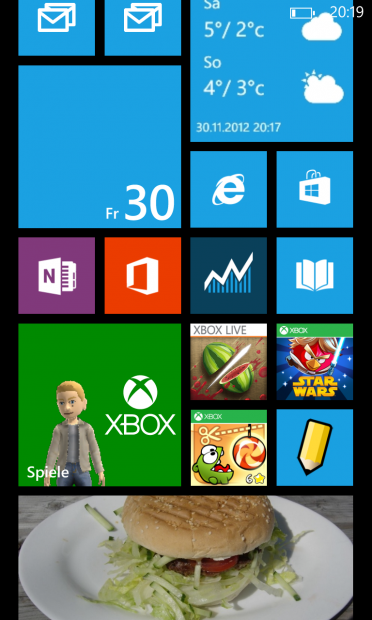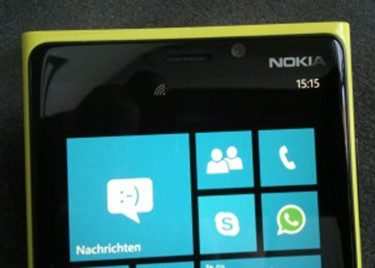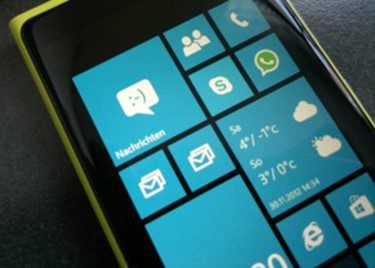Review: Nokia Lumia 920; Part 3: The display
4 min. read
Updated on
Read our disclosure page to find out how can you help MSPoweruser sustain the editorial team Read more
First of all: I’m sorry it took so long to finish this review. I was ill and wasn’t writing lengthy articles. However, now that I’m better, I’m going to try to catch up the lost time. So, let’s start with the third part of the review of the 920! Today we will take a look at the display.
The resolution of the screen is 1280×768 pixels. This is really good since the resulting PPI (pixels per inch) is 332 – this is even higher than on the iPhone 5, but a bit less than on the HTC Windows Phone 8X. However, above 300PPI, the human eye is not able to recognize single pixels, so there is really no difference between the sharpness on all screens having a PPI higher than 300. But this high resolution also has a small disadvantage: Games and apps written for Windows Phone 7 (which only supports a way smaller resolution) need to be stretched and look a bit blurry and pixelated. Fortunately, Windows Phone 8 does a great job rendering, which means that even the old apps have acceptable textures. However, they still do not look as good as apps optimized for higher resolutions.
The Lumia 920 has an IPS panel. Some of you may be disappointed about that because it is not an AMOLED screen. Well, I can’t make you change your mind, but I can tell you my opinion about AMOLED and IPS:
I had a Lumia 800 with an AMOLED screen before. At first I was like, “wow, awesome!”, but since I have a 920, the colors on the 800 seem to be oversaturated. The deep black of the 800 is still awesome and I still miss that a bit, but the 920’s screen has much more natural colors. Also, the screen is significantly brighter! When you are outside, the Lumia 800 is definitely readable, but it could be brighter. The 920 cranks the brightness up to the maximum. Thanks to the ClearBlack technology, the screen is equally as readable indoors as outdoors!
However, the brightness and the resolution aren’t the most incredible things about the screen technology…
One of the most impressive features of the screen is “PureMotion HD+”. The “HD+” stands for the resolution which I already mentioned above, but “PureMotion” is really special: The response time is about 9 milliseconds, versus the 23 milliseconds normally found in IPS-LCD screens according to Nokia. Unfortunately, it is very difficult to find the response time of competitors’ phones, so this statistic remains unconfirmed. A response time of around 9 ms is important because if a phone is to run at 60 fps, the screen must be displaying a new frame every 16.7 milliseconds. If the response time were higher than this, blur might be noticed. However, AMOLED screens still have the advantage of the fastest response rates, with “response times of microseconds rather than milliseconds” according to FlatPanelsHD. And we were previously incorrect about the Lumia 920 having a better refresh rate when compared to the competitors. LCD screens on competitors also seem to be 60 Hz from what we could find. The refresh rate (Hertz) of the screen is doubled! As far as I know, normal smartphone screens have about a 30Hz refresh rate. The Lumia 920 has a screen with a 60Hz refresh rate, which makes movements look much clearer and smoother. If you compare phones side-by-side, you can see the difference! Many TV’s nowadays have a refresh rate of at least 60 Hz, but the Lumia is the first smartphone to feature this improved refresh rate, making it an iconic phone for history.
The second awesome feature is “Super Sensitive Touch”. With “Super Sensitive Touch” you can use the screen with your fingernails, gloves, etc! It won’t work with things that are relatively not conductive, such as cardboard or plastic, but as long as you don’t have super thick gloves, your touch will be registered. I tested this feature myself and it works really well. When you first turn on the phone’s screen while wearing gloves, you may need to press a little harder for it to register your touch, but once it is unlocked you can touch it like normal. You can also turn off this feature in the settings in case you don’t want to use it (note: you must enable it in the settings… it comes disabled!).
All in all, the screen is amazing! The colors are really natural, the sharpness is amazing and so are the details. Also, the black is great (for an IPS screen. I still miss the continuous black on the front of my device which I had on my Lumia 800), movements are shown with less motion blur and the touchscreen can be used with gloves on, which – for me – is the most amazing feature the 920 offers. I think I can give a rating of 10/10 points without anybody disagreeing.











User forum
0 messages